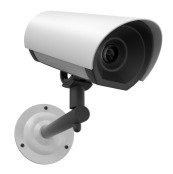"How Can Carbon Monoxide Alarms Save Your Family?"
Carbon Monoxide Alarms should be an important part of your home security strategy. They detect carbon monoxide gas and set off an alarm. This alarm will let you get your family quickly out of the house. Some system-connected detectors will alert a monitoring company and they will send the appropriate authorities to your house to check on the situation.
Carbon Monoxide
What is it?
Carbon Monoxide (CO) is a deadly, odorless, colorless, and poisonous gas. It is produced by the incomplete burning of various fuels including coal, wood, propane, and natural gas.

In the home, carbon monoxide can be produced by various appliances. The gas is formed from incomplete combustion from any flame-fueled (not electric) appliance. These appliances can include ranges, ovens, and dryers.
A vehicle in a garage can also produce carbon monoxide. Vehicles are the main causes of carbon monoxide poisoning.
What are the dangers of Carbon Monoxide?
Carbon Monoxide is a deadly and poisonous gas. It is dangerous because it can't be detected without a detection device. That is why it is sometimes called a silent killer.
Smaller concentrations can be damaging over a longer duration of time. A larger concentration of carbon monoxide present can do damage to an individual over a shorter amount of time.
What are the dangers of Carbon Monoxide?
Symptoms for low levels of CO poisoning are similar to symptoms of the flu. These symptoms can include headaches, nausea, and dizziness.
Symptoms of CO poisoning
The symptoms for a high level of CO poisoning are much worse for the individual. High levels of CO poisoning can result in progressively more severe symptoms. These symptoms can include:
- Mental confusion
- Vomiting
- Loss of muscular coordination
- Loss of consciousness
- Ultimately death
How to Prevent CO poisoning?

- Make sure you install and operate appliances to manufacturer's specs and local building codes.
- Never operate a portable generator or any other gasoline powered tool inside in a garage or a room. Even if you have doors or windows open, poisonous gas can still be trapped in inside spaces.
- Don't burn charcoal inside.
- Never use gas appliances, such as ranges or dryers, to heat your home.
- Don't run a car in a garage. This should be the case even if you have the garage door open.
- Make sure you install and maintain a CO alarm that meets current UL safety standards.
Carbon Monoxide Alarms
As mentioned, Carbon Monoxide alarms should be an important part of preventing CO poisoning. Detectors can be battery powered or AC powered. The hard wired detectors should have a battery back-up in case you lose power.
Carbon monoxide detectors have three main sensor types. The sensor types are electrochemical, colorimetric, and metal oxide semiconductor sensors.
Electrochemical sensors
Electrochemical sensors work like fuel cells. The fuel cell is designed to produce a current that is related to the amount carbon monoxide in the atmosphere. The concentration of CO gas is measured by a reading of the current.
This type of sensor is dominant within the CO detector category.
Colorimetric sensors
This type of sensor darkens with the presence of carbon monoxide gas. These types of sensors measure the concentration of CO gas over time.
Semiconductor sensors
This type of sensor measures CO gas using integrated circuit technology. The sensing element has to be heated to 400 degrees Celsius to be able to work.
These types of detectors can also pick up other gases such as chlorine bleaches and silicones.
Installation of CO detectors
Carbon monoxide alarms should be installed based on manufacturer's instructions. The US Consumer Product Safety Commission says that CO detectors should be installed in the hallway outside the bedrooms in each separate sleeping area of the home.
CO alarms may be installed into a plug-in receptacle or high on the wall. The density of CO gas is very similar to air.
The gas sensor in a Carbon Monoxide detector typically runs out in 2 to 5 years. Read the manufacturer's instructions. There are also test buttons on the detectors, but this tests to make sure the detector is powered. It does not let you know about the gas sensor.
Related Content:
Find out more about a Nighthawk Carbon Monoxide Detector



